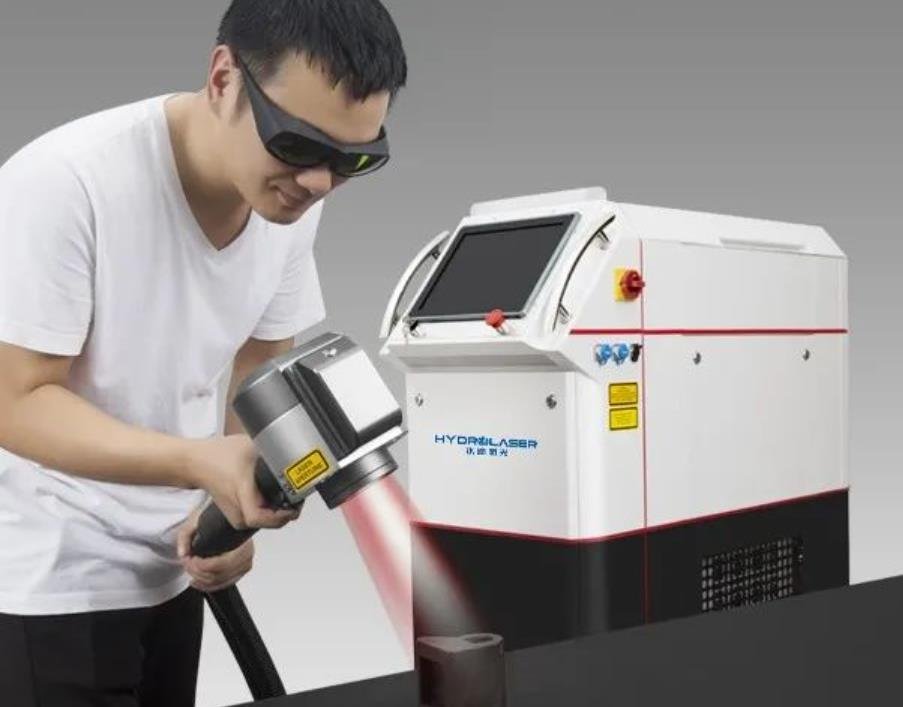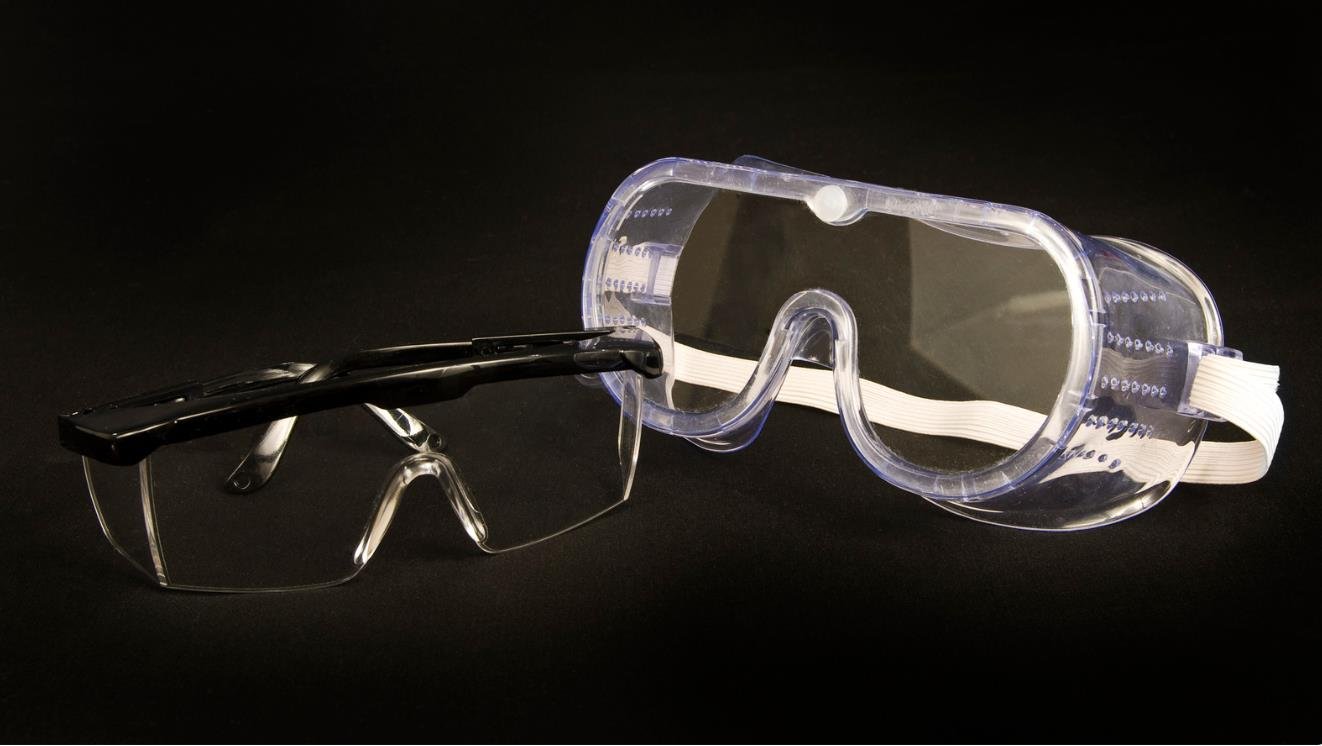The Best 15 Types of Laser Safety Goggles
1.IPL (Intense Pulsed Light) Safety Goggles

IPL (Intense Pulsed Light) safety goggles are a vital piece of personal protective equipment specifically designed to shield the eyes from intense pulsed light sources that are widely used in cosmetic and dermatological treatments. These specialized goggles ensure the safety of both patients and practitioners during various procedures that leverage the power of light to deliver targeted therapeutic effects on the skin.
IPL safety goggles are engineered to provide protection against the specific wavelengths of light emitted by IPL devices. These devices produce broad-spectrum light that spans from ultraviolet to infrared wavelengths. The goggles effectively block these wavelengths, preventing eye injuries or damage caused by direct or scattered light exposure.
Some of the most common cosmetic and dermatological procedures that utilize IPL technology include:
- Hair removal: IPL devices target hair follicles with pulses of light, destroying the follicles and inhibiting hair growth in the process.
- Skin rejuvenation: IPL treatments can help reduce the appearance of pigmentation issues, such as age spots, sun damage, and freckles, while improving skin tone and texture.
- Photofacials: These treatments use IPL to target and treat various skin concerns, including acne, rosacea, broken capillaries, and uneven pigmentation.
- Vascular and pigmented lesion treatments: IPL can effectively target and remove spider veins, broken blood vessels, and other vascular or pigmented lesions.
When selecting IPL safety goggles, it is essential to consider the specific wavelengths and optical density (OD) ratings required for the IPL device being used. The goggles should fit comfortably and securely, allowing the wearer to focus on performing the procedure without distractions. Additionally, ensuring that the goggles meet the necessary safety standards and are certified for use with IPL devices is crucial for maintaining a safe treatment environment.
2.CO2 Laser Safety Goggles

CO2 laser safety goggles are specifically designed to shield the eyes from the infrared light emitted by CO2 lasers, which operate at a wavelength of around 10,600 nm. CO2 lasers are frequently utilized in various medical and industrial applications, making these goggles a crucial piece of personal protective equipment for those working in these fields.
CO2 lasers generate a concentrated beam of infrared light that can cause severe eye damage if not properly protected against. The goggles are designed with specialized lenses that filter out the specific wavelength of the CO2 laser, providing effective protection from direct or scattered laser light exposure.
Some common applications of CO2 lasers include:
- Medical procedures: CO2 lasers are used in various medical treatments, such as skin resurfacing, removal of warts, moles, and skin tags, and laser-assisted surgeries.
- Industrial applications: CO2 lasers are employed in cutting, engraving, and welding of various materials, including metals, plastics, and glass.
- Research: CO2 lasers are used in research settings for spectroscopy, LIDAR, and laser-induced breakdown spectroscopy (LIBS).
When selecting CO2 laser safety goggles, it is crucial to consider the specific optical density (OD) ratings required for the laser being used. The OD rating indicates the amount of light attenuation the goggles provide, ensuring that the eyes are protected from the laser’s intensity. It is also essential to ensure that the goggles meet the necessary safety standards and are certified for use with CO2 lasers.
3.Fiber Laser Safety Goggles

Fiber laser safety goggles are specifically designed for use with fiber lasers, which have become increasingly popular in various industrial processes such as metal cutting, welding, and marking. These specialized goggles provide crucial protection for operators, ensuring that their eyes are shielded from the potentially harmful effects of the laser light.
Fiber lasers emit light at different wavelengths depending on the specific application, with common wavelengths ranging from 1030 nm to 1100 nm. Fiber laser safety goggles are equipped with specialized lenses that filter out these specific wavelengths, offering effective protection from direct, reflected, or scattered laser light exposure.
Some common applications of fiber lasers include:
- Metal cutting: Fiber lasers are widely used for precision cutting of various metals, including steel, aluminum, copper, and brass, due to their high power, accuracy, and efficiency.
- Welding: Fiber lasers provide a precise and controlled heat source, making them ideal for welding applications in the automotive, aerospace, and electronics industries.
- Marking: Fiber lasers are used for high-quality and durable marking on metals, plastics, and other materials, often employed for part identification, traceability, and branding purposes.
When choosing fiber laser safety goggles, it is essential to consider the specific optical density (OD) ratings and wavelength protection required for the laser being used. The OD rating indicates the amount of light attenuation provided by the goggles, ensuring the eyes are protected from the laser’s intensity. It is also crucial to ensure that the goggles meet the necessary safety standards and are certified for use with fiber lasers.
4.Diode Laser Safety Goggles

Diode laser safety goggles are specifically designed to protect the eyes from diode lasers, which are commonly used in various applications such as hair removal, medical procedures, and laser pointers. These specialized goggles provide essential protection for both patients and practitioners, ensuring that their eyes are shielded from the potentially harmful effects of the laser light.
Diode lasers emit light at different wavelengths depending on the specific application. Common wavelengths for diode lasers range from 800 nm to 980 nm, although some can extend up to 1064 nm. Diode laser safety goggles feature specialized lenses that filter out these specific wavelengths, offering effective protection from direct, reflected, or scattered laser light exposure.
Some common applications of diode lasers include:
- Hair removal: Diode lasers are widely used for permanent hair reduction, targeting the hair follicles with precise, controlled pulses of light.
- Medical procedures: Diode lasers are employed in various medical treatments, such as photodynamic therapy, endovenous laser treatment, and dental procedures.
- Laser pointers: Diode lasers are the primary light source for many laser pointers, which are commonly used in presentations, lectures, and stargazing.
When selecting diode laser safety goggles, it is essential to consider the specific optical density (OD) ratings and wavelength protection required for the laser being used. The OD rating indicates the amount of light attenuation provided by the goggles, ensuring the eyes are protected from the laser’s intensity. It is also crucial to ensure that the goggles meet the necessary safety standards and are certified for use with diode lasers.
5.Nd:YAG Laser Safety Goggles

Nd:YAG laser safety goggles are specifically designed to protect the eyes from neodymium-doped yttrium aluminum garnet (Nd:YAG) lasers, which are often used in various medical, industrial, and military applications. These specialized goggles provide crucial protection by shielding the eyes from the potentially harmful effects of the laser light, especially at wavelengths around 1064 nm.
Nd:YAG lasers are versatile and powerful, with applications including:
- Medical procedures: Nd:YAG lasers are employed in a range of medical treatments, such as laser-assisted lipolysis, laser-assisted in situ keratomileusis (LASIK) surgery, and photocoagulation in ophthalmology.
- Industrial applications: Nd:YAG lasers are used for cutting, welding, and marking various materials, including metals, ceramics, and plastics.
- Military applications: Nd:YAG lasers are utilized in rangefinders, target designators, and laser-induced breakdown spectroscopy (LIBS) for chemical analysis.
Nd:YAG laser safety goggles feature specialized lenses that filter out the specific wavelength of the Nd:YAG laser, offering effective protection from direct, reflected, or scattered laser light exposure. When selecting Nd:YAG laser safety goggles, it is essential to consider the specific optical density (OD) ratings and wavelength protection required for the laser being used. The OD rating indicates the amount of light attenuation provided by the goggles, ensuring the eyes are protected from the laser’s intensity.
It is also crucial to ensure that the goggles meet the necessary safety standards and are certified for use with Nd:YAG lasers. The goggles should fit comfortably and securely, allowing the wearer to concentrate on their work without distractions. In addition to providing eye protection, Nd:YAG laser safety goggles can also improve visibility by reducing glare and reflections caused by the laser light.
6.Ruby Laser Safety Goggles

Ruby laser safety goggles are specifically designed to provide protection against ruby lasers, which emit light at a wavelength of 694.3 nm. These specialized goggles offer crucial protection for those working with ruby lasers in various applications, including dermatology, holography, and research, by shielding the eyes from the potentially harmful effects of the laser light.
Ruby lasers are characterized by their unique wavelength and applications, such as:
- Dermatology: Ruby lasers are used for skin treatments, including tattoo removal and treating pigmented lesions.
- Holography: Ruby lasers are employed in creating high-quality, three-dimensional holographic images for display and research purposes.
- Research: Ruby lasers are utilized in scientific research for applications such as spectroscopy and laser-induced breakdown spectroscopy (LIBS) for chemical analysis.
Ruby laser safety goggles feature specialized lenses that filter out the specific wavelength of the ruby laser, offering effective protection from direct, reflected, or scattered laser light exposure. When selecting ruby laser safety goggles, it is essential to consider the specific optical density (OD) ratings and wavelength protection required for the laser being used. The OD rating indicates the amount of light attenuation provided by the goggles, ensuring the eyes are protected from the laser’s intensity.
It is also crucial to ensure that the goggles meet the necessary safety standards and are certified for use with ruby lasers. The goggles should fit comfortably and securely, allowing the wearer to concentrate on their work without distractions. In addition to providing eye protection, ruby laser safety goggles can also improve visibility by reducing glare and reflections caused by the laser light.
7.Argon Laser Safety Goggles

Argon laser safety goggles are specifically designed to protect the eyes from argon lasers, which emit light at wavelengths around 488 nm and 514.5 nm. These specialized goggles provide crucial protection for those working with argon lasers in various applications, including medical procedures (particularly in ophthalmology), spectroscopy, and laser light shows, by shielding the eyes from the potentially harmful effects of the laser light.
Argon lasers have unique characteristics and a wide range of applications, such as:
- Medical applications: Argon lasers are widely used in ophthalmology for procedures like photocoagulation, retinal surgery, and glaucoma treatment.
- Spectroscopy: Argon lasers are employed in scientific research for applications such as Raman spectroscopy and fluorescence spectroscopy.
- Laser light shows: Argon lasers are utilized in entertainment settings to create vibrant, colorful laser light displays and effects.
Argon laser safety goggles feature specialized lenses that filter out the specific wavelengths of the argon laser, offering effective protection from direct, reflected, or scattered laser light exposure. When selecting argon laser safety goggles, it is essential to consider the specific optical density (OD) ratings and wavelength protection required for the laser being used. The OD rating indicates the amount of light attenuation provided by the goggles, ensuring the eyes are protected from the laser’s intensity.
8.Helium-Neon (HeNe) Laser Safety Goggles

Helium-Neon (HeNe) laser safety goggles are specifically designed to protect the eyes from HeNe lasers, which are low-power gas lasers emitting light at a wavelength of 632.8 nm. These specialized goggles provide crucial protection for those working with HeNe lasers in various applications, including education, research, and alignment tasks, by shielding the eyes from the potentially harmful effects of the laser light.
HeNe lasers are known for their unique characteristics and diverse applications, such as:
- Education: HeNe lasers are often used in educational settings to teach fundamental principles of optics, lasers, and photonics.
- Research: HeNe lasers are utilized in scientific research for applications like interferometry, holography, and spectroscopy.
- Alignment tasks: HeNe lasers are employed in industrial settings for tasks like alignment of optical components, machinery, and other equipment.
HeNe laser safety goggles feature specialized lenses that filter out the specific wavelength of the HeNe laser, offering effective protection from direct, reflected, or scattered laser light exposure. When selecting HeNe laser safety goggles, it is essential to consider the specific optical density (OD) ratings and wavelength protection required for the laser being used. The OD rating indicates the amount of light attenuation provided by the goggles, ensuring the eyes are protected from the laser’s intensity.
9.Excimer Laser Safety Goggles

Excimer laser safety goggles are specifically designed to protect the eyes from excimer lasers, which emit ultraviolet (UV) light at specific wavelengths, such as 193 nm, 248 nm, and 308 nm. These specialized goggles provide crucial protection for those working with excimer lasers in various applications, including eye surgery, semiconductor manufacturing, and research, by shielding the eyes from the potentially harmful effects of the laser light.
Excimer lasers are characterized by their unique UV wavelengths and diverse applications, such as:
- Eye surgery: Excimer lasers are used in refractive eye surgery procedures, like photorefractive keratectomy (PRK) and laser-assisted in situ keratomileusis (LASIK), to reshape the cornea and improve vision.
- Semiconductor manufacturing: Excimer lasers are employed in photolithography processes for patterning integrated circuits and other semiconductor devices.
- Research: Excimer lasers are utilized in scientific research for applications such as laser ablation, surface modification, and spectroscopy.
Excimer laser safety goggles feature specialized lenses that filter out the specific wavelengths of the excimer laser, offering effective protection from direct, reflected, or scattered laser light exposure. When selecting excimer laser safety goggles, it is essential to consider the specific optical density (OD) ratings and wavelength protection required for the laser being used. The OD rating indicates the amount of light attenuation provided by the goggles, ensuring the eyes are protected from the laser’s intensity.
10.Green Laser Safety Goggles

Green laser safety goggles are specifically designed to protect the eyes from green lasers, which typically emit light at a wavelength of 532 nm. These specialized goggles provide crucial protection for those working with green lasers in various applications, including pointers, laser light shows, and research, by shielding the eyes from the potentially harmful effects of the laser light.
Green lasers are popular due to their visible and bright color and have diverse applications, such as:
- Pointers: Green lasers are often used in pointers for presentations, stargazing, and other activities where a visible and bright beam is required.
- Laser light shows: Green lasers are employed in entertainment settings to create vibrant, colorful laser light displays and effects.
- Research: Green lasers are utilized in scientific research for applications like fluorescence microscopy, spectroscopy, and holography.
Green laser safety goggles feature specialized lenses that filter out the specific wavelength of the green laser, offering effective protection from direct, reflected, or scattered laser light exposure. When selecting green laser safety goggles, it is essential to consider the specific optical density (OD) ratings and wavelength protection required for the laser being used. The OD rating indicates the amount of light attenuation provided by the goggles, ensuring the eyes are protected from the laser’s intensity.
11.Blue Laser Safety Goggles
Blue laser safety goggles are specifically designed to protect the eyes from blue lasers, which generally emit light at wavelengths around 445 nm or 473 nm. These specialized goggles provide crucial protection for those working with blue lasers in various applications, including microscopy, spectroscopy, and optical data storage, by shielding the eyes from the potentially harmful effects of the laser light.
Blue lasers are valued for their unique characteristics and diverse applications, such as:
- Microscopy: Blue lasers are used in confocal and fluorescence microscopy to excite specific fluorophores and enable the visualization of cellular structures and processes.
- Spectroscopy: Blue lasers are employed in Raman spectroscopy and other spectroscopic techniques for analyzing the composition and properties of various materials.
- Optical data storage: Blue lasers are utilized in optical data storage devices like Blu-ray Disc players and recorders, offering increased data storage capacity and improved performance compared to red lasers.
Blue laser safety goggles feature specialized lenses that filter out the specific wavelengths of the blue laser, offering effective protection from direct, reflected, or scattered laser light exposure. When selecting blue laser safety goggles, it is essential to consider the specific optical density (OD) ratings and wavelength protection required for the laser being used. The OD rating indicates the amount of light attenuation provided by the goggles, ensuring the eyes are protected from the laser’s intensity.
12.Ultraviolet (UV) Laser Safety Goggles

Ultraviolet (UV) laser safety goggles are specifically designed to protect the eyes from ultraviolet lasers, which emit light in the UV range (typically 10 nm to 400 nm). These specialized goggles provide crucial protection for those working with UV lasers in various applications, including fluorescence microscopy, photolithography, and sterilization, by shielding the eyes from the potentially harmful effects of the laser light.
UV lasers are recognized for their unique properties and diverse applications, such as:
- Fluorescence microscopy: UV lasers are used to excite fluorophores in fluorescence microscopy, enabling the visualization of cellular structures and biological processes.
- Photolithography: UV lasers are employed in photolithography processes, a critical technique for patterning semiconductor devices and integrated circuits in microelectronics manufacturing.
- Sterilization: UV lasers are utilized for sterilizing medical instruments, laboratory equipment, and other items, due to their ability to inactivate microorganisms by damaging their DNA or RNA.
UV laser safety goggles feature specialized lenses that filter out the specific wavelengths of the UV laser, offering effective protection from direct, reflected, or scattered laser light exposure. When selecting UV laser safety goggles, it is essential to consider the specific optical density (OD) ratings and wavelength protection required for the laser being used. The OD rating indicates the amount of light attenuation provided by the goggles, ensuring the eyes are protected from the laser’s intensity.
13.Infrared (IR) Laser Safety Goggles
Infrared (IR) laser safety goggles are specifically designed to protect the eyes from infrared lasers, which emit light in the infrared range (typically 700 nm to 1 mm). These specialized goggles provide crucial protection for those working with IR lasers in various applications, including remote sensing, fiber optic communications, and medical procedures, by shielding the eyes from the potentially harmful effects of the laser light.
Infrared lasers are valued for their unique properties and diverse applications, such as:
- Remote sensing: IR lasers are used in LIDAR (Light Detection and Ranging) systems to measure distance and create detailed topographical maps for environmental monitoring, land surveying, and resource management.
- Fiber optic communications: IR lasers are employed as light sources in fiber optic communication networks, enabling high-speed data transmission over long distances.
- Medical procedures: IR lasers are utilized in various medical procedures, such as laser-assisted surgeries, tissue ablation, and photocoagulation.
IR laser safety goggles feature specialized lenses that filter out the specific wavelengths of the infrared laser, offering effective protection from direct, reflected, or scattered laser light exposure. When selecting IR laser safety goggles, it is essential to consider the specific optical density (OD) ratings and wavelength protection required for the laser being used. The OD rating indicates the amount of light attenuation provided by the goggles, ensuring the eyes are protected from the laser’s intensity.
14.Holmium Laser Safety Goggles
Holmium laser safety goggles are specifically designed to protect the eyes from holmium lasers, which emit light at a wavelength of around 2100 nm. These specialized goggles provide crucial protection for those working with holmium lasers, mainly used in medical procedures, particularly for soft tissue surgeries and lithotripsy (breaking down kidney stones), by shielding the eyes from the potentially harmful effects of the laser light.
Holmium lasers are valued for their unique properties and medical applications, such as:
- Soft tissue surgeries: Holmium lasers are used in various soft tissue surgeries, including urology, gastroenterology, and orthopedics, due to their ability to precisely cut, ablate, and coagulate tissue with minimal collateral damage.
- Lithotripsy: Holmium lasers are employed in lithotripsy procedures to break down kidney stones, ureteral stones, and bladder stones into smaller fragments that can be more easily passed or removed.
Holmium laser safety goggles feature specialized lenses that filter out the specific wavelengths of the holmium laser, offering effective protection from direct, reflected, or scattered laser light exposure. When selecting holmium laser safety goggles, it is essential to consider the specific optical density (OD) ratings and wavelength protection required for the laser being used. The OD rating indicates the amount of light attenuation provided by the goggles, ensuring the eyes are protected from the laser’s intensity.
15.Thulium Laser Safety Goggle
Thulium laser safety goggles are specifically designed to protect the eyes from thulium lasers, which emit light at a wavelength of around 1940 nm. These specialized goggles provide crucial protection for those working with thulium lasers, primarily used for medical purposes, such as soft tissue ablation and oral surgery, by shielding the eyes from the potentially harmful effects of the laser light.
Thulium lasers are valued for their unique properties and medical applications, such as:
- Soft tissue ablation: Thulium lasers are used for various soft tissue ablation procedures, including treatment of benign prostatic hyperplasia (BPH), endometrial ablation, and tumor removal, due to their precise cutting and coagulation capabilities with minimal heat dispersion.
- Oral surgery: Thulium lasers are employed in oral surgery for procedures like gingivectomy, frenectomy, and periodontal treatment, providing effective treatment with reduced bleeding, swelling, and discomfort compared to traditional methods.
Thulium laser safety goggles feature specialized lenses that filter out the specific wavelengths of the thulium laser, offering effective protection from direct, reflected, or scattered laser light exposure. When selecting thulium laser safety goggles, it is essential to consider the specific optical density (OD) ratings and wavelength protection required for the laser being used. The OD rating indicates the amount of light attenuation provided by the goggles, ensuring the eyes are protected from the laser’s intensity.





